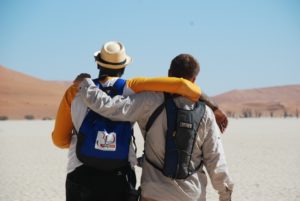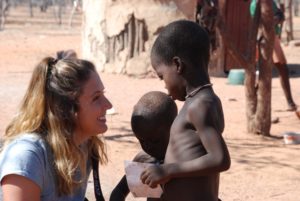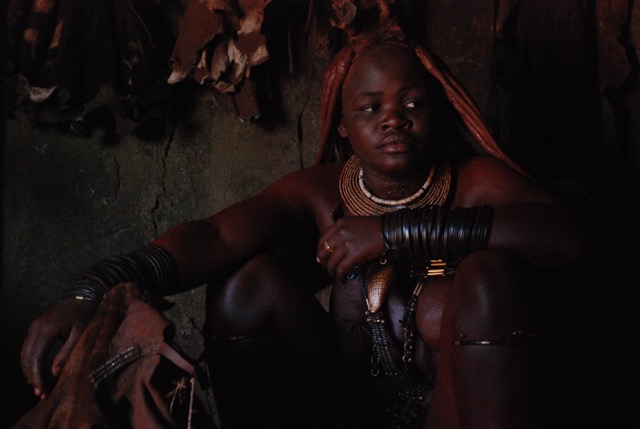If somebody had asked me what the meaning of ‘cultural pluralism’ was three weeks ago, I would have given a dictionary definition without knowing its true meaning. Now, I could try explaining the meaning in many ways, but still not succeed because of my lack of words to describe new experiences and memories. However, I can show it.

Raymond Thomas and Zeke McReynolds stroll through the sandy dunes of Sossusvlei, Namibia, after climbing Big Daddy.
Since day one, we have gotten to know each other in an unfamiliar environment outside our comfort zones, even though we began as 16 strangers who became friends in a foreign land. Not only did I get to know myself better through my peers, but I also learned the significance of different perspectives coexisting and while we are different, human nature is similar.
Heritage, the upbringing and roots of an individual, is something personal and has varied definitions across regions and groups of people. Damara women apply red clay on their cheeks to appear more attractive, whereas Himba women apply red clay to their entire bodies for perfume and sun protection. After visiting three villages, our group gained insights into many traditional ways of life, each with its own customs. For example, the Himba (about 50,000) have many traditions such as producing red clay from pounded and heated hematite stone, bathing in smoke, and using jewelry and hairstyles to differentiate between men and women.

Julia Hay interacts with children from a Himba village. The taller child is female; the Himba culture utilizes necklaces to differentiate gender from a young age.
My most impactful moments during the trip were when I was repeatedly reminded of Namibians’ pride of their culture. I’ve never experienced a people express such strong patriotism for their country, while trying to preserve their many cultures. This is a side many tourists do not notice in other countries; we can all appreciate the importance of love for one’s nation.
Many of these customs remind me of my own heritage and upbringing overseas. Where I grew up in New Delhi, Indians apply henna as tradition for weddings and festivals, whereas the practice has now also migrated to America as an art form that diversifies many communities. Diversity is a concept that connects ideas of Namibia and the United States; various cultures and their practices can coexist in a country.

A Himba woman demonstrates how to bathe in smoke in the chief’s hut and applies red clay mixture. The women practice this routine daily in their own huts.
A pluralistic nation is one in which various cultural groups have established their culture and function as smaller parts within a larger society. About 65 percent of Namibia’s population resides in the northern region; as a result, the education system struggles to provide opportunities for all students, and largely only those with access to financial resources are able to get ahead.
Justa, a primary school teacher from Rundu, described the hardships of her students as “brought upon the children because of a dysfunctional family.” That was not the first time I heard of such issues; even in America, children face problems when the eldest has to care for younger siblings, in lieu of a mother or father figure. As a life skills teacher, Justa mentioned teaching primary school children about the obstacles of teenage pregnancy and her own difficulty coping with the students’ conditions outside of school.
As a whole, Namibians epitomize the meaning of a truly united nation and each individual has the same pride in his or her culture. Realizing the importance of each culture group and its separate livelihood and learning to look past the disparities allows this country to be truly pluralistic.
